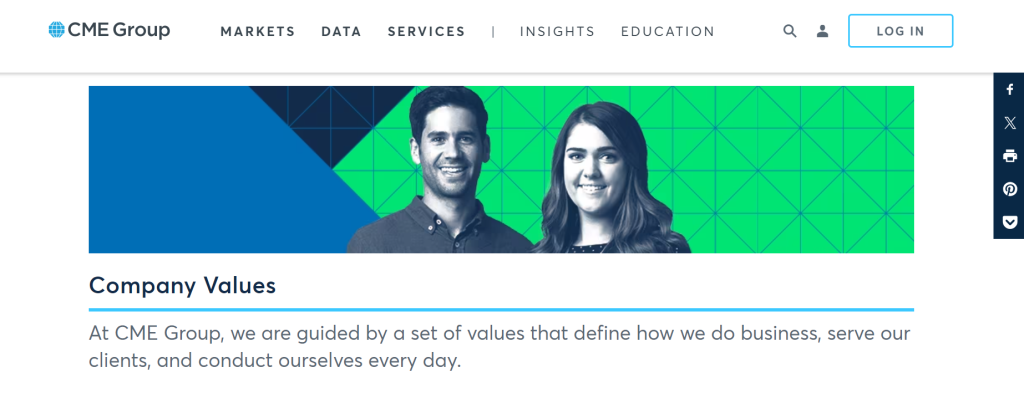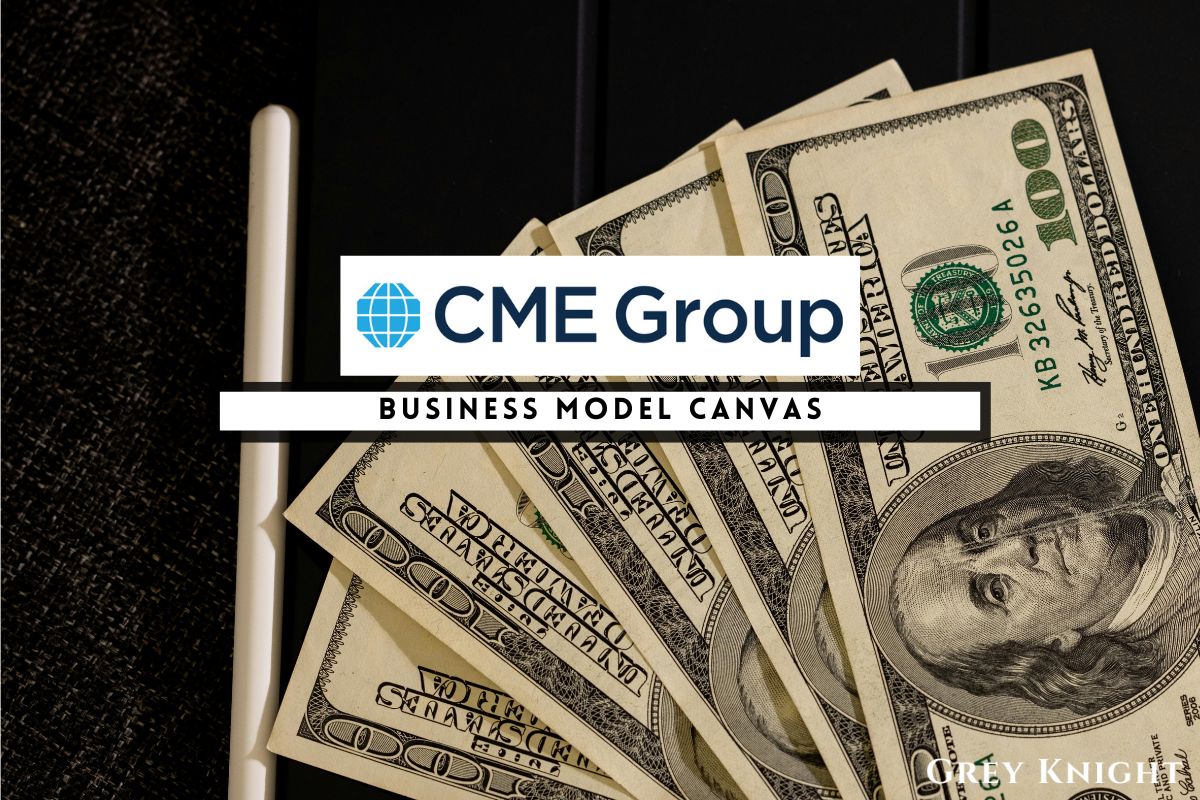Table of Contents
ToggleA Brief History of CME Group
CME Group Inc. was formed in 2007, following the merger of the Chicago Mercantile Exchange (CME) and the Chicago Board of Trade (CBOT). Both the CME and the CBOT had long histories before their merger. The CME was founded in 1898 as the Chicago Butter and Egg Board and later expanded its offerings to include agricultural commodities, financial products, and derivatives.
The CBOT, on the other hand, was founded in 1848 and was the world’s oldest futures and options exchange. It was originally focused on agricultural commodities but also expanded to include financial products and derivatives over the years.
After the merger, CME Group continued to grow and expand its offerings, acquiring the New York Mercantile Exchange (NYMEX) in 2008 and the Commodity Exchange, Inc. (COMEX) in 2009. These acquisitions solidified CME Group’s position as the leading derivatives marketplace in the world.
In addition to its traditional futures and options trading, CME Group also offers a wide range of products and services related to risk management, clearing and settlement, and market data. The company operates several trading platforms, including the CME Globex electronic trading platform, and has a global presence with offices and exchange operations in various locations around the world.
Today, CME Group is a global leader in the derivatives marketplace, providing a diverse range of products and services to a broad range of customers, including institutional and retail traders, producers, and commercial users of various commodities and financial instruments.
Who Owns CME Group?
CME Group Inc. is owned by a diverse group of shareholders, including individual investors, institutional investors, and mutual funds. The largest shareholders of CME Group Inc. are typically institutional investors such as Vanguard Group, BlackRock Inc., and State Street Corp. These institutional investors hold a significant stake in the company and play a major role in shaping its future direction. Other top shareholders include FMR LLC, T. Rowe Price Associates, and Capital Research & Management Co. Overall, CME Group Inc. has a wide range of shareholders who have a vested interest in the company’s success and growth.
CME Group Mission Satement

CME Group Inc. is the world’s leading and most diverse derivatives marketplace, offering a wide range of global benchmark products across all major asset classes. Their mission is to provide a transparent, efficient, and effective marketplace that enables their clients to manage risk and achieve their financial goals. Through innovation, technology, and customer-focused solutions, CME Group Inc. seeks to lead the way in shaping the future of global financial markets.
How Does CME Group Make Money?
CME Group Inc. operates a financial derivatives and commodities exchange, and its business model primarily revolves around facilitating the trading of futures contracts and options on futures contracts. The company makes money primarily through transaction fees and commissions, as market participants buy and sell these financial instruments on its trading platform. In addition to trading revenues, CME Group also generates revenue from other sources such as clearing and settlement services, market data and information services, and technology services. Overall, the company’s revenue stream is driven by the volume and value of transactions and contracts traded on its exchanges.
CME Group Business Model Canvas
The Business Model Canvas is a strategic management tool used to visually depict, design, and analyze an organization’s business model. It allows businesses to describe, design, challenge, invent, and pivot their business model.
Customer Segments:
– Retail investors
– Institutional investors
– Corporations
– Governments
– Exchanges and clearinghouses
Value Propositions:
– Reliable and secure trading and clearing services
– Access to a variety of asset classes
– Market data and analytics
– Risk management solutions
– Regulatory reporting services
Channels:
– Electronic trading platforms
– Broker networks
– Clearing members
– Direct sales force
– Online marketing and advertising
Customer Relationships:
– Personalized customer support
– User-friendly online platforms
– Educational resources and training
– Market research and analysis
– Regular communication and updates
Revenue Streams:
– Transaction fees
– Clearing and settlement fees
– Data and information services
– Membership and licensing fees
– Market data and technology services
Key Resources:
– Technology infrastructure and platforms
– Market data and analytics
– Regulatory and compliance expertise
– Skilled workforce
– Strategic partnerships and alliances
Key Activities:
– Matching and executing trades
– Clearing and settling transactions
– Risk management and compliance
– Product development and innovation
– Market surveillance and oversight
Key Partners:
– Clearing members and brokers
– Regulators and government entities
– Technology vendors and solution providers
– Financial institutions and asset managers
– Industry associations and trade groups
Cost Structure:
– Technology infrastructure and maintenance
– Employee compensation and benefits
– Regulatory and compliance expenses
– Marketing and advertising costs
– Research and development expenditures
CME Group’s Competitors
CME Group Inc. is a global markets company that operates the world’s largest futures and options exchange. As a leader in the financial industry, CME Group Inc. faces competition from other major players in the market. Some of its top competitors include:
1. Intercontinental Exchange (ICE)
2. Euronext
3. Nasdaq, Inc.
4. Hong Kong Exchanges and Clearing (HKEX)
5. London Stock Exchange Group (LSEG)
CME Group SWOT Analysis
Strengths:
1. Leading global derivatives marketplace.
2. Diverse product offerings.
3. Strong brand reputation.
4. Innovative technology solutions.
Weaknesses:
1. Vulnerability to market fluctuations.
2. Limited geographical diversification.
3. Reliance on financial markets.
Opportunities:
1. Expansion into emerging markets.
2. Growing demand for risk management solutions.
3. Technological advancements in trading platforms.
4. Potential for strategic partnerships and acquisitions.
Threats:
1. Regulatory changes impacting derivatives trading.
2. Intense competition from other exchanges.
3. Economic downturns affecting trading volumes.
4. Cybersecurity risks.
Concluding Analysis
In conclusion, the business model of CME Group Inc. has proven to be robust and adaptable, positioning the company as a leader in the derivatives and financial markets. As an analyst, I am optimistic about the future of the business. With its strong track record, innovative products and services, and continued investment in technology, CME Group Inc. is well-positioned to capitalize on the evolving needs of global markets. The company’s ability to pivot and innovate in response to changing market conditions gives me confidence in its long-term success. I believe that CME Group Inc. will continue to thrive and maintain its position as a market leader in the years to come.
Additional Resources
To keep learning and advancing your career, we highly recommend these additional resources:
Business Model Canvas of The Top 1,000 Largest Companies by Market Cap in 2024
A List of 1000 Venture Capital Firms & Investors with LinkedIn Profiles
Peter Thiel and the 16 Unicorns: The Legacy of Thiel Fellowship












